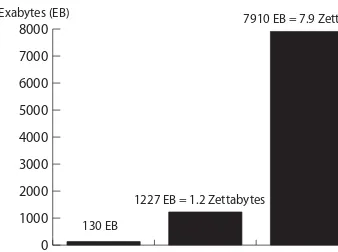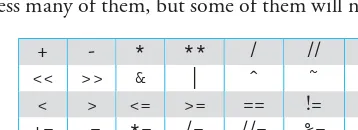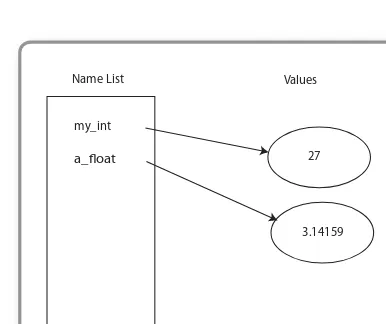Informasi Dokumen
- Sekolah: Pearson Education, Inc.
- Mata Pelajaran: Computer Science
- Topik: The Practice of Computing Using Python 2nd Edition
- Tipe: textbook
- Tahun: 2013
- Kota: Upper Saddle River
Ringkasan Dokumen
I. Thinking About Computing
This section introduces the foundational concepts of computer science, emphasizing its relevance beyond mere programming. It discusses the importance of understanding the theory of computation, computational efficiency, and the role of algorithms and data structures. The section articulates how these principles form the backbone of effective programming and problem-solving. By exploring the various fields within computer science, students are encouraged to appreciate the broader implications of their studies, which extend into real-world applications.
II. Starting to Program
This part focuses on the initial steps of programming, including basic concepts such as variables, control structures, and the importance of algorithms. It highlights the significance of practice in developing programming skills and introduces essential programming constructs. The section aims to build a solid foundation for students, enabling them to approach problem-solving with confidence and creativity. By examining real-world examples, students can relate theoretical knowledge to practical applications, enhancing their learning experience.
2.1. Practice, Practice, Practice
This subsection emphasizes the necessity of continuous practice in mastering programming skills. It introduces the concept of an interactive session, where students can engage with code in real-time, fostering a hands-on learning environment. The focus is on developing a mindset geared towards problem-solving through programming, encouraging students to experiment with code and learn from their mistakes.
2.2. Control Structures
Control structures are pivotal in programming, allowing for decision-making and iteration. This section delves into the selection statement and repetition mechanisms, illustrating how they enable programmers to create dynamic and responsive applications. By understanding these concepts, students can write more complex and functional programs, enhancing their problem-solving capabilities.
2.3. Algorithms and Program Development
Algorithms are critical for effective programming. This subsection explains what constitutes a good algorithm and how it differs from a program. Students learn to develop algorithms that are efficient and robust, preparing them for more advanced programming challenges. The focus on algorithm design helps students cultivate analytical thinking and systematic problem-solving skills.
III. Functions and Data Structures
This section introduces functions as reusable code blocks that enhance the modularity and readability of programs. It discusses various data structures, including lists, tuples, and dictionaries, and their importance in organizing and manipulating data efficiently. By mastering these concepts, students can write more sophisticated programs and understand the underlying principles of data management in computing.
3.1. Functions—QuickStart
Functions are a key feature of programming that allow for code reusability and organization. This subsection introduces the basic syntax and structure of functions in Python, providing students with the tools to create their own functions. The focus is on understanding parameters, return values, and the flow of control within programs.
3.2. Lists and Tuples
Lists and tuples are fundamental data structures in Python. This subsection explores their characteristics, differences, and appropriate use cases. Students learn how to manipulate these structures through indexing, slicing, and iteration, which are essential for effective data handling in programming.
3.3. Dictionaries and Sets
Dictionaries and sets provide powerful ways to store and retrieve data. This subsection explains their unique properties and operations, highlighting their importance in various programming scenarios. By understanding these data structures, students can implement more complex algorithms and data management techniques.
IV. Classes and Object-Oriented Programming
This section introduces the principles of object-oriented programming (OOP), focusing on the creation and utilization of classes. It discusses key OOP concepts such as encapsulation, inheritance, and polymorphism, which empower students to design more organized and scalable programs. By learning to create their own data structures, students can model real-world problems more effectively.
4.1. Introduction to Classes
This subsection introduces the concept of classes in Python, explaining how they encapsulate data and behavior. Students learn to define their own classes, creating instances and utilizing methods to interact with those instances. The focus is on understanding the relationship between classes and objects, which is fundamental to OOP.
4.2. More on Classes
Building on the introduction to classes, this subsection delves deeper into advanced OOP concepts such as inheritance and polymorphism. Students learn how to create subclasses and override methods, enabling them to build more complex and flexible programs. The emphasis is on practical applications of OOP principles in real-world scenarios.
V. Being a Better Programmer
This section focuses on best practices in programming, including testing, debugging, and exception handling. It emphasizes the importance of writing clean, maintainable code and developing effective problem-solving strategies. By fostering a mindset geared towards continuous improvement, students are encouraged to refine their programming skills and adopt professional standards in their work.
5.1. Testing
Testing is a crucial aspect of software development. This subsection discusses various testing methodologies and their importance in ensuring program reliability. Students learn to identify and fix bugs, improving their ability to produce high-quality software.
5.2. Exception Handling
Exception handling is vital for creating robust programs. This subsection introduces students to the concepts of error detection and handling in Python, enabling them to write programs that can gracefully manage unexpected situations.
VI. Appendices
The appendices provide additional resources and tools for students, including installation guides, supplemental programming exercises, and solutions to self-check exercises. These resources are designed to reinforce learning and provide practical support as students continue to develop their programming skills.
6.1. Getting and Using Python
This appendix offers guidance on installing Python and setting up the programming environment. It includes tips for troubleshooting common installation issues, ensuring that students can effectively access the tools they need for their coursework.
6.2. Simple Drawing with Turtle Graphics
This appendix introduces Turtle Graphics as a fun way to engage with programming concepts. Students learn to create visual representations of their code, enhancing their understanding of programming logic and structure.
6.3. Plotting and Numeric Tools
This appendix provides an overview of plotting and numeric tools available in Python. It introduces libraries such as Matplotlib and NumPy, which are essential for data visualization and numerical analysis, further enriching the students' programming toolkit.

![FIGURE 0.6 Vacuum tube, single transistor, and chip transistor (the dot). [Reprint Courtesy ofInternational Business Machines Corporation, copyright © International Business MachinesCorporation]](https://thumb-ap.123doks.com/thumbv2/123dok/3935112.1878532/47.527.218.338.344.444/transistor-transistor-courtesy-ofinternational-machines-corporation-international-machinescorporation.webp)
![FIGURE 0.9 The Shockley transistor—the first transistor. [Reprinted with permission of Alcatel-Lucent USA Inc.]](https://thumb-ap.123doks.com/thumbv2/123dok/3935112.1878532/49.527.187.369.433.573/figure-shockley-transistor-transistor-reprinted-permission-alcatel-lucent.webp)
![FIGURE 0.12 Intel Nehalem Quad Core Processor. [Reprinted with permission from IntelCorporation]](https://thumb-ap.123doks.com/thumbv2/123dok/3935112.1878532/52.542.191.367.74.225/figure-intel-nehalem-quad-processor-reprinted-permission-intelcorporation.webp)




